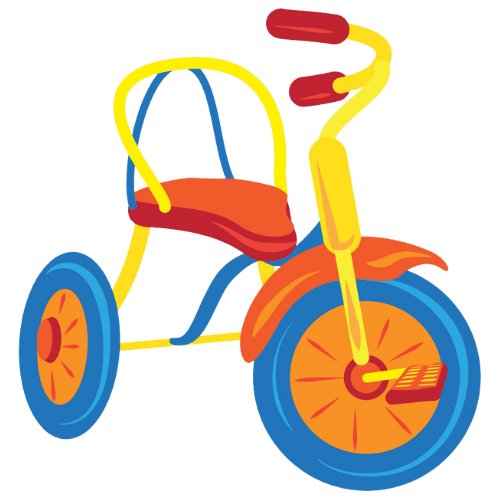Access in New Zealand, Barriers And Cycle Routes
Children with Disability NZ Our mission is to make New Zealand the most disabled child friendly region in the world!

Barriers & Cycle Routes
Cycle Route and Barriers Let's Rethink Accessibility:
Promoting Everyday Cycling, The Lirklees Cycling Campaign Located in The UK, Part 1:
April 14th, 2022 Physical barriers on infrastructure can not only be discriminatory to those with disabilities; they also hinder efforts to transition to active travel, writes Chris Knight. If a modal shift to mass walking and cycling is ever going to take place, we must recognize and address this obstacle to encourage and enable more walking and cycling. Around 1 in 5 people in the UK live with a condition that affects their physical ability, but whatever your abilities, accessibility is often underestimated as a key issue in making cycling for the transportation of people and goods mainstream. How can we make active travel attractive to newcomers and normalize it in our communities if physical barriers inhibit the transition?
Active travel can have positive impacts on the health, wellbeing, and financial situations of individuals, families, and society as a whole. A shift of perspective from moving cars to moving people has broad appeal and the potential to relieve stretched council budgets for many things: roads, reducing transport times and congestion, improving public health, making streets safer for children, reducing noise and air pollution, addressing climate change, reducing dependence on the oil supply from despotic tyrants, and, perhaps most importantly, making our streets and town centers more pleasant places to live.

So Why Is There So Much Resistance, and Why Is This Change Not Happening?
We know that many of the issues above are linked to car dependency throughout the country. In our local area, the lack of safety on our roads is apparent; there are regular complaints of speeding and antisocial parking. These are often highlighted as key issues by the communities in Kirklees. MPs and Councillors have worked with West Yorkshire Police to start Operation Torbank in the Batley and Spen area, which utilises road policing and enforcement teams to deal with driving and parking offences. I’m sure most people reading this will also be aware that there is a climate emergency and that surface traffic is the single largest contributor to pollution and CO2 emissions in the UK, which makes the need for change all the more urgent.
The efforts of national and local government appear to be focused on swapping fossil fuel vehicles for electric equivalents, perhaps because it is politically easy and involves little in the way of change on our roads. Electrification does little to alleviate the aforementioned problems. A transition focused only on electrification is a missed opportunity; it locks us into energy-intensive lifestyles and dependence on high-cost car use. Active travel for short and medium-range journeys has the potential to save people money and energy.
It’s also worth noting that car dominance is a matter of fairness; the negative aspects of car use tend to affect the least well off the most—the intimidation of high traffic and speeds can stop people from traveling by foot or bike and force them into car ownership or onto slow, unreliable, and indirect public transport. In a similar way to how certain fish can be indicators of a healthy river system, there are indicator species of people on bicycles for a healthy cycle network. Where we are used to seeing the MAMIL cyclist wearing Lycra on a road bike with dropped handlebars, on a healthy cycle network you would see a much greater percentage of women doing everyday journeys (over 50%), an equal number of people from BAME communities, and many more people over the age of 60. These people will usually not be on race bikes but instead on commuter bikes, shopper bikes with sweeping handlebars and baskets, cargo bikes for transporting business equipment, shopping, or children, and adapted bicycles, tricycles, and handcycles for people with mobility issues. Sadly, we see very few of these indicator species cycling around Kirklees, and when we do, they are usually cycling on the footway for the feeling of safety that the kerb provides.
Benefits of family cycling
“When cycling along with your family members, you won't even notice you are working out.”
-Glen McMillan.
Barriers & Cycle Routes
We Want To Help Everyone; Let's Improve Starting Today!

Local Greenway Has Multiple Barriers and Struggles:
The Wilton Greenway could potentially be part of such a healthy cycle network as it would provide a safe, traffic-free route between Batley and Birstall, but sadly the route is blocked to many by restrictive access barriers. There has been back and forth between Kirklees Council and CycleKirklees members for a couple of years now, including the issue being raised at various council and cabinet meetings, and whereas there has been some ‘progress,’ the changes being made are still 20 years behind the times. The K-Frame barriers on access points at Transvaal Terrace and Brookroyd Lane, along with the wooden chicane barrier that was until recently on the northern access at Brookroyd Lane, mean that people on bicycles with sweeping handlebars, baskets, trailers, tag-alongs, adapted bicycles, and tandems are not able to access this safe route.
This violates the 2010 Equality Act on numerous issues, including disallowing the passage of disabled people with their mobility devices. There is currently an FOI in with regards to accessibility on this route from a disabled handcyclist, which covers these details much better than I can and is long overdue a reply from the council. Click the button to find out more. Though I was in part relieved to hear from council officers via Kim Leadbeater’s office that the wooden chicane was being removed, its replacement and the lack of action on the remaining barriers are still obviously of great concern. The email stated, ‘We have also considered available design guidance, including LTN 1/20 design guidance from DfT in 2020, Sustrans greenway design guides for 2019, and the 2020 Wheels for Wellbeing inclusive cycling guide.’
The Department For Transport’s LTN 1/20 Says, Let;s Look At 8.3 Access Controls:
8.3.1 Access controls can reduce the usability of a route for all cyclists and may exclude some disabled people and others riding nonstandard cycles. There should therefore be a general presumption against the use of access controls unless there is a persistent and significant problem of antisocial moped or motorcycle access that cannot be controlled through periodic policing.
8.3.2 Access controls that require the cyclist to dismount or cannot accommodate the cycle-design vehicle are not inclusive and should not be used.
8.3.3 Access controls should not be required simply to control cyclists on the approach to a road or footway crossing. It will normally be sufficient to provide good sightlines and road markings so that cyclists clearly understand the need to take care and give way to pedestrians and other traffic at such points.
8.3.4 Chicane barriers cannot be used by people on tandems, tricycles, cargo bikes, or people with child trailers. They may also be inaccessible to some types of wheelchairs and mobility scooters. An access control that requires cyclists to dismount will exclude hand cyclists and others who cannot easily walk. Barriers fitted with plates that are designed to be narrower than motorcycle handlebars will also leave a gap that is narrower than many larger cycles. This will require cyclists to stop and put a foot down to pass through, which can be difficult when carrying children or heavy luggage.
8.3.5 An alternative method is to provide bollards at a minimum of 1.5m spacing, which allows users to approach in a straight line while permitting all types of bicycles and mobility scooters to gain access. If access is required by wider maintenance vehicles, a lockable bollard can be used. n.b. The cycle-design vehicle "is assumed to be 2.8m long and 1.2m wide." [5.4.1].
Children's Testimonials
“As a child with special needs, I require love, guidance, encouragement, and positive influences just like all other children.”
-Alex O.
Barriers & Cycle Routes
Let's Rethink Accessibility:
Sustrans Greenways Design Guide Says:
9.1.7 Designers must fulfill their duties under the Equality Act 2010 when designing access points. They must ensure that routes remain accessible to all users following the introduction of access points. A poorly designed access point can serve to exclude users from routes. Particularly where designers place too much emphasis on preventing access by motorized vehicles. Staggered access points usually incorporate width restrictions to prevent access by motorized vehicles.
Without due consideration, these can serve to exclude some wheelers, horse riders, and those using adaptive bikes. Any width restriction through a staggered access point should be no less than 1.5m. Designers should also consider the traveled paths of all users passing through the access point. They should ensure that enough width is maintained at all times and no point restrictions below 1.5m are introduced.


9.3 Protecting Accessibility:
9.3.1 Historically, access controls at interfaces with traffic-free routes have consisted of A-frames. A well-designed and installed A-frame can be effective in restricting access by motorcycles and other motorized vehicles. But they have also served to exclude many users from routes.
These include wheelers, users of adaptive or larger bikes, and those with pushchairs. On this basis, A-frames must not be used as access control on routes.
Include All Children
"Embrace the best life has to offer. Be unique. Love who you are. Play to your strengths."
-Glen McMillan.
Barriers & Cycle Routes
Wheels For Wellbeing Inclusive Cycling Guide and Access Control Barriers:

Barriers and Cycle Route Problem's Part 2:
Many cyclists cannot dismount and push or wheel their cycle. Sections of the road network that are not continuous or that require the cyclist to make awkward maneuvers or dismount pose a significant barrier for disabled cyclists. This is particularly so for hand cyclists, where it is not an option for the rider to get off and walk at a barrier or hazard, and it also applies to many people who use a bicycle as a mobility aid.
It is wrongly assumed that a cyclist always rides a bicycle or can lift their bicycle over a barrier. Access control measures and barriers that prevent access to motorbikes, mopeds, and scooters also prevent access to inclusive cycles (e.g., A-frames, K-frames, York Chicanes, and kissing gates). Kissing gates cannot be used by cyclists who cannot dismount. Barriers are difficult and can be impossible for hand cyclists to negotiate.
Here Are Our Solutions:
It is not recommended to have any barriers along a path that is used by cycles. If it is necessary to prevent access for livestock, use cycle- and wheelchair-friendly cattle grids. In addition, provide a firm, smooth path section and gate for those who are able to operate gates (it must not be assumed, however, that a Disabled person will always be accompanied by someone who can operate the gate mechanism for them). After considering the design guides that all say not to install K-barriers and to leave gaps of 1.5m to allow for a 1.2m wide bicycle the decision has been made to install an adjustable K-barrier that adjusts up to a maximum of 750mm! Half the width of the design requirements and a whole 450mm short of the design vehicle width. Experience Community, a local charity who deal with leisure activities for disabled people, were aware of these barriers and had raised it previously as a concern but were not contacted or consulted with regards to the new replacement, neither were CycleKirklees. I have concerns that even the new pedestrian guardrail has been positioned so that there isn’t enough room to turn a longer bicycle or bicycle with a trailer across Brookroyd Lane and onto the greenway.
I’m not a fan of motorbikes using cycle routes and I don’t want to see motorbikes scrambling around Wilton Park but that is not a reason to be stopping legitimate use. The problem of motorbikes needs to be dealt with by the police not with physical barriers, this is commonly recognised throughout the country. What’s worse is that as electric motorbikes and e-scooters are becoming more and more popular there will be no way of physically stopping them from gaining access no matter how long you wait for a newly designed barrier. E-scooters will still be able to get into any space that a person walking can. There are 7 ways to easily ride a motorbike into Wilton Park, and there are 2 barriers, both on a signposted cycle route. Even so, from the 460 calls relating to Nuisance Bikes and Quads in Batley and Spen 2021, only 4 calls were relating to Nuisance Bikes and Quads in Wilton Park.
At a time when we should be making bicycling for transport as attractive as possible by using safe, direct, coherent, and comfortable routes we’ve still for barriers. Barriers that stop bicycles because of the threat of motorbikes are the equivalent of banning HGVs from a road and then putting bollards across so that cars can’t drive through and can you imagine the backlash from that. We really need to open our minds and to our environment ( Disabled people are not the problem society and the environment are the problem ) more effort needs to go into providing access the practice of punishing the many for the crimes of the few is old fashioned blocking access to the disabled in order to block access to motorbikes is unfair and needs urgent review.
Children's Testimonials
“A child is like a butterfly in the wind. Some can fly higher than others, but each one flies the best it can. Why compare one against the other? Each one is different; each one is special; each one is beautiful.”
-Says My Mother.